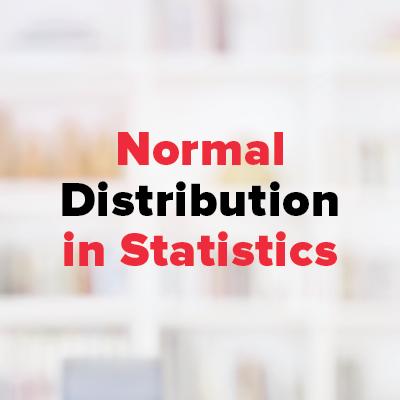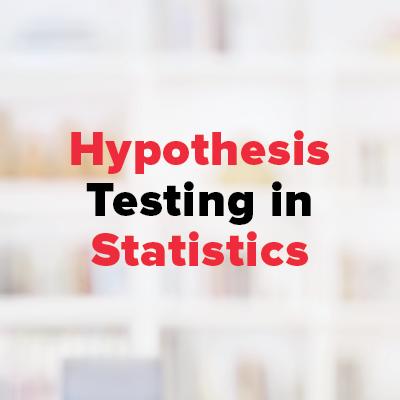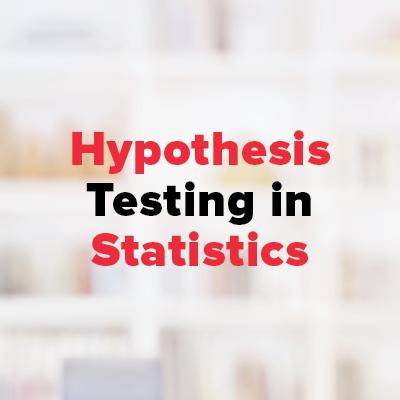Working professionals
Domains
Doctorate
Artificial Intelligence
Data Science
Gen AI & Agentic AI
MBA
Marketing
Management
Education
Project Management
Doctorate
For All Domains
IIITB & IIM, Udaipur
Chief Technology Officer & AI Leadership ProgrammeSwiss School of Business and Management
Global Doctor of Business Administration from SSBMEdgewood University
Doctorate in Business Administration by Edgewood UniversityGolden Gate University
Doctor of Business Administration From Golden Gate UniversityRushford Business School
Doctor of Business Administration from Rushford Business School, SwitzerlandGolden Gate University
MBA to DBA PathwayLeadership / AI
Golden Gate University
DBA in Emerging Technologies with Concentration in Generative AIGolden Gate University
DBA in Digital Leadership from Golden Gate University, San FranciscoArtificial Intelligence
Degree / Exec. PG
IIIT Bangalore
Executive Diploma in Machine Learning and AIOPJ Global University
Master’s Degree in Artificial Intelligence and Data ScienceLiverpool John Moores University
Master of Science in Machine Learning & AIGolden Gate University
DBA in Emerging Technologies with Concentration in Generative AIExecutive Certificate
IIITB & IIM, Udaipur
Chief Technology Officer & AI Leadership ProgrammeIIIT Bangalore
Executive Programme in Generative AI for LeadersupGrad | Microsoft
Gen AI Foundations Certificate Program from MicrosoftupGrad | Microsoft
Gen AI Mastery Certificate for Data AnalysisupGrad | Microsoft
Gen AI Mastery Certificate for Software DevelopmentupGrad | Microsoft
Gen AI Mastery Certificate for Managerial ExcellenceOffline Bootcamps
upGrad
Data Science and AI-MLData Science
Degree / Exec. PG
O.P Jindal Global University
Master’s Degree in Artificial Intelligence and Data ScienceIIIT Bangalore
Executive Diploma in Data Science & AILiverpool John Moores University
Master of Science in Data ScienceExecutive Certificate
upGrad | Microsoft
Gen AI Foundations Certificate Program from MicrosoftupGrad | Microsoft
Gen AI Mastery Certificate for Data AnalysisupGrad | Microsoft
Gen AI Mastery Certificate for Software DevelopmentupGrad | Microsoft
Gen AI Mastery Certificate for Managerial ExcellenceupGrad | Microsoft
Gen AI Mastery Certificate for Content CreationOffline Bootcamps
upGrad
Data Science and AI-MLupGrad
Data AnalyticsGen AI & Agentic AI
Gen AI & Agentic AI
Masters

Paris School of Business
Master of Science in Business Management and TechnologyO.P.Jindal Global University
MBA (with Career Acceleration Program by upGrad)Edgewood University
MBA from Edgewood UniversityO.P.Jindal Global University
MBA from O.P.Jindal Global UniversityGolden Gate University
MBA to DBA PathwayExecutive Certificate
IMT, Ghaziabad
Advanced General Management ProgramMarketing
Executive Certificate
upGrad | Microsoft
Gen AI Foundations Certificate Program from MicrosoftupGrad | Microsoft
Gen AI Mastery Certificate for Content CreationOffline Bootcamps
upGrad
Digital MarketingManagement
Degree
O.P Jindal Global University
MSc in International Accounting & Finance (ACCA integrated)
Paris School of Business
Master of Science in Business Management and TechnologyGolden Gate University
Master of Arts in Industrial-Organizational PsychologyExecutive Certificate
Education
Education
Northeastern University
Master of Education (M.Ed.) from Northeastern UniversityEdgewood University
Doctor of Education (Ed.D.)Edgewood University
Master of Education (M.Ed.) from Edgewood UniversityProject Management
Accreditation Certifications
-7f4b4f34e09d42bfa73b58f4a230cffa.webp&w=128&q=75)
Knowledgehut
Project Management Masters Certification ProgramKnowledgehut
Change ManagementKnowledgehut
Project Management TechniquesKnowledgehut
Oracle Primavera P6 V18.8-7f4b4f34e09d42bfa73b58f4a230cffa.webp&w=128&q=75)
Knowledgehut
PMP® CertificationKnowledgehut
PRINCE2® FoundationKnowledgehut
PRINCE2® PractitionerFresh graduates
Domains
Data Science
Management
Marketing
Data Science
Bootcamp
Offline Bootcamps
upGrad
Data Science and AI-MLupGrad
Data AnalyticsManagement
Marketing
Bootcamp
upGrad Campus
Advanced Certificate in Performance MarketingOffline Bootcamps
upGrad
Digital Marketing- Study abroad
- Offline centres
More
RESOURCES
BlogsCutting-edge insights on education
WebinarsLive sessions with industry experts
TutorialsMaster skills with expert guidance
Learning GuideResources for learning and growth
COMPANY
Careers at upGradYour path to educational impact
Hire from upGradTop talent, ready to excel
upGrad for BusinessSkill. Shape. Scale.
Experience centerImmersive learning hubs
About usOur vision for education
OTHERS
Refer and earnShare knowledge, get rewarded
Inferential Statistics Courses Online
Make data-driven decision with Inferential Statistics courses. Master concepts such as hypothesis testing, confidence intervals, and statistical significance to make informed decisions from data at your own convenience with expert support.
-80f5aca04e9b49ca9902fe2806c12f6e%20(1)-05c9b5b2614c40b681f04c3275487b40.jpeg&w=3840&q=75)
Overview of Learning Inferential Statistics Courses with upGrad
Inferential statistics represent “a branch of statistics that concludes about a population through sample analysis”. It is important because it allows data scientists to predict, test hypotheses, and quantify uncertainty in results. Unlike descriptive statistics, which simply describe or summarize data, inferential statistics help you in making informed decisions with the help of data.
Importance of Learning Inferential Statistics
- Enables Data-Driven Decisions: Helps you generalize findings from a sample to a larger population.
- Core Skills in Data Science & Data Analytics: It's essential for model building, A/B testing, and validating business assumptions.
- Supports Predictive Analysis: Uses statistical inference methods to make predictions and decisions in the face of uncertainty.
- Sharpens Critical Thinking: Teaches you how to approach problems methodically and question assumptions using data.
- High Industry Relevance: Widely used in finance, healthcare, marketing, policy research, and tech-driven industries.
- Builds Foundation for Advanced Stats & ML: A must-have before diving into machine learning, regression models, and AI applications.
upGrad is among the best platforms for learning inferential statistics through their Data Science and Analytics programs, which are developed in association with world-class universities and companies. These programs consist of project-based learning, mentorship, and certification. Regardless of whether you’re looking for the best statistics course for data science or an introductory statistics online course, upGrad will set you up with the tools, ideas, and hands-on experience required for success in the analytics field.
Who Should Take Inferential Statistics Online Courses
- Beginners Exploring Data Science: For those new to it, an inferential statistics course provides a great basis for statistical thinking.
- Professionals Looking to Upskill: Best suited for business, marketing, finance, and tech professionals interested in learning how inferential statistics is applied to decision making.
- Career Switchers into Analytics: Moving into data science? These statistics courses prepare you with fundamental tools to analyze data in the world.
- Future Data Scientists & Analysts: Take the best statistics course for data science to learn how to perform the inferential statistics steps, such as hypothesis testing and confidence intervals.
- Researchers and Academics: Reinforce your thinking and make logical inferences through the significance of inferential statistics.
- Anyone Seeking Flexibility: Learn at your own pace with flexible courses on inferential statistics online offered by some of the United States’ leading universities.
What Will You Learn in upGrad’s Inferential Statistics Online Courses?
upGrad’s data science and analytics courses feature high-quality courses in inferential statistics, and the company partners with leading Indian and global universities to do so. These classes have excellent value if you are a newcomer wanting to learn the basics or a professional seeking to take courses to refine your abilities in statistical analysis.
These inferential statistical skills are provided in top programs such as:
- Master's in AI and Data Science from O.P. Jindal Global University
- Data Science Master’s Degree from Liverpool John Moores University - LJMU
- Executive Post Graduate Certificate Programme from IIIT Bangalore
These inferential statistics classes prepare you to deal with issues that are important when analyzing data in the real world:
- Hypothesis Testing: Discover how to test hypotheses with t-tests, chi-square tests, and ANOVA methods.
- Confidence Intervals: Learn how confidence levels are used to estimate population parameters.
- Probability Distributions: Dive into normal, binomial, and Poisson distributions for predictive modeling.
- Application of Inferential Statistics: Apply statistical inference to make conclusions from datasets and data-driven business, healthcare, and tech industry decisions.
- Sampling Techniques: Learn how to conduct the steps of inferential statistics, such as sampling design and reducing error.
- Python & Statistical Libraries: Implement your learning with Python libraries such as SciPy and statsmodels for statistical analysis.
- Statistical Significance in Business Scenarios: Learn how to understand p-values and statistical significance in actual decision-making situations.
- Industry-Driven Projects: Use inferential statistics in problem-solving for industries such as marketing, finance, and operations.
Data Science Course Instructors
Learn From The Best
Learn Data Science fundamentals from expert instructors who help you excel in your careers by imparting cutting-edge analytics and machine learning skills.
8
Instructors
10
Industry Experts

Debabrata Das

Director, IIITB
Dr. Debabrata Das is Director of IIITB. He has received his PhD from IIT-KGP. His main areas of research are IoT and Wireless Access Network

Prof. Dhiya Al-Jumeily

Professor - Artificial Intelligence
A senior member of the IEEE and a chartered IT Professional, he is a fellow of the UK Higher Education ACademy

Prof. G. Srinivasaraghavan

Professor
Prof. Srinivasaraghavan has a PhD in Computer Science from IIT-K and 18 years of experience with Infosys and several other MNCs.

Dr. Atif Waraich

Faculty - Computer Science
A Senior faculty of Engineering and Technology at LJMU who has multiple publications in the health care domain

Chandrashekar Ramanathan

Dean Academics
Prof. Chandrashekar has a PhD from Mississippi State University and experience of over 10 years in several multinational organisations.

Prof. Paulo Lisboa

Head of Dept - Applied Mathematics
Studied mathematical physics at LU and was the chairman of Industrial Mathematics at KMJU in 1996 and Head of Graduate School in 2002

Dr. Gabriela Czanner

Faculty - Engineering and Technology
A Senior lecturer at Department of Applied Mathematics at LJMU. Her research focus is advanced statistics for decision support

Tricha Anjali

Ex-Associate Dean
Prof. Anjali has a PhD from Georgia Institute of Technology as well as an integrated MTech (EE) from IIT Bombay.

Rajesh Sabapathy

Sr Director, Data Science
Rajesh has 10+ years of experience leading Data Science teams in various domains solving complex problems using Deep Learning & ML technique

Ankit Jain

ML Engineering Manager
An alumnus of IIT Bombay, UCB, and HBS with over 9 years of experience. Ankit has been recognised as 40Under40 Data Scientist for 2022

Kautuk Pandey

Lead Data Engineer
Kautuk has 10+ years of experience working in Data Science. He is a seasoned professional in Big Data, AWS, Pyspark and other technologies

Behzad Ahmadi

Data Scientist
An M. Tech graduate and PhD from Jersey Institute of Technology, Behzad possesses tremendous years of experience in Data Science and ML

Ujjyaini Mitra

Head of Analytics
An alumnus of McKinsey and Co, Flipkart and Bharati Airtel with over 11 years of experience

Mirza Rahim Baig

Lead Analyst
Advanced analytics professional with 8+ years of experience as a consultant in the e-commerce and healthcare domains.

Anshuman Gupta

Director, Data Science
He has a Ph.D (Dual) from Penn State University as well as a B.Tech. Degree from IIT Bombay

Sajan Kedia

Ex- Data Science Lead
Sajan graduated from IIT, BHU and has tons of experience in Data Science, Big Data, Spark, Machine Learning and Natural Language Processing

S. Anand
-39a9e7a7278a441ea08a60a1f45b4913.png&w=128&q=75)
CEO
An alumnus of IIT Madras, IIM Bangalore and LBS London, Anand is among the top 10 data scientists in India with 20 years of experience

Bijoy Kumar Khandelwal

COO, Actify
Bijoy comes with a deep understanding of the private and cloud architectures and has helped numerous companies make the transition
Data Science Projects
Learn by Doing
Our data science online certification programs have projects to apply theoretical knowledge in practical scenarios, helps you to tackle real-world problems.
16+
Industry projects to choose from
In this assignment, you will work for a consumer finance company which specialises in lending various types of loans to urban customers and use EDA to analyse the patterns present in the data. This will ensure that the applicants are capable of repaying the loan are not rejected.
Data Visualisation
Data Analysis
Data Interpretation
Credit EDA Assignment
In this assignment, you will work for a consumer finance company which specialises in lending various types of loans to urban customers and use EDA to… Know More
Skills learned
Data Cleaning
Data Visualisation
Data Analysis
Data Interpretation
MySQL Queries
Data Manipulation
Data Analysis
RSVP Case Study
In this assignment, you will work on a movies dataset using SQL to extract exciting insights about popular films and the factors that drive a film.
Skills learned
MySQL
MySQL Queries
Data Manipulation
Data Analysis
ML Modelling
Model Evaluation
Bike Sharing Assignment
Build a regression model to understand the factors on which the demand for bike sharing systems vary on and help a company optimise its revenue.
Skills learned
Linear Regression
ML Modelling
Model Evaluation
In this case study, the company requires you to build a machine learning classification model wherein using some demographics and behavioral data of the leads (potential buyers), it will be able to identify the ones most likely to convert.
Decision Trees
Classification
ML Modelling
Model Evaluation
Business Problem Solving
Lead Scoring Case Study
In this case study, the company requires you to build a machine learning classification model wherein using some demographics and behavioral data of t… Know More
Skills learned
Logistic Regression
Decision Trees
Classification
ML Modelling
Model Evaluation
Business Problem Solving
Telecom companies often face the problem of churning customers due to the competitive nature of the industry. Help a telecom company identify customers that are likely to churn and make data-driven strategies to retain them from the perspective of a business analyst.
Tree Models
Model Selection
Feature Engineering
Classification
ML Modelling
Model Evaluation
Business Problem Solving
Model Selection Case Study - Telecom Churn
Telecom companies often face the problem of churning customers due to the competitive nature of the industry. Help a telecom company identify customer… Know More
Skills learned
Logistic Regression
Tree Models
Model Selection
Feature Engineering
Classification
ML Modelling
Model Evaluation
Business Problem Solving
Telecom companies often face the problem of churning customers due to the competitive nature of the industry. Help a telecom company identify customers that are likely to churn and make data-driven strategies to retain them from the perspective of a data scientist.
Tree Models
Boosting
Model Selection
Regularization
Feature Engineering
Classification
ML Modelling
Model Evaluation
Business Problem Solving
Advanced ML Case Study - Telecom Churn
Telecom companies often face the problem of churning customers due to the competitive nature of the industry. Help a telecom company identify customer… Know More
Skills learned
Logistic Regression
Tree Models
Boosting
Model Selection
Regularization
Feature Engineering
Classification
ML Modelling
Model Evaluation
Business Problem Solving
Lexical Processing
Regex
POS Tagging
Dependency Parsing
Syntactic Processing Assignment
Use the techniques such as POS tagging and Dependency parsing to extract information from unstructured text data.
Skills learned
Natural Language Processing
Lexical Processing
Regex
POS Tagging
Dependency Parsing
Sqoop
Redshift
Spark
ETL Pipeline
ETL Project
Make use of Sqoop, Redshift & Spark to design an ETL data pipeline.
Skills learned
AWS
Sqoop
Redshift
Spark
ETL Pipeline
Analyse movie data from the past 100 years and find out various insights to determine what makes a movie do well. Use data manipulation, slicing, and various other dataframe operations to successfully find usable insights from the movies.
Data Processing
Data Visualisation
Data Analysis
Dashboarding
Data Storytelling
IPL Visualization Assignment
Analyse movie data from the past 100 years and find out various insights to determine what makes a movie do well. Use data manipulation, slicing, and … Know More
Skills learned
Tableau/Power BI
Data Processing
Data Visualisation
Data Analysis
Dashboarding
Data Storytelling
Linear Regression
ML Model Evaluation
Advanced Regression
Build a regularized regression model to understand the most important variables to predict
Skills learned
ML Modeling
Linear Regression
ML Model Evaluation
Hadoop
MapReduce Programming
mrjob
Linux
Sqoop
Apache HBase
SQL
MapReduce Programming Assignment
Perform MapReduce Programming in a big data environment on a large dataset.
Skills learned
AWS
Hadoop
MapReduce Programming
mrjob
Linux
Sqoop
Apache HBase
SQL
Big Data with Spark
PySpark
Big Data Case Study
Understand how a big data project in the industry is taken up and solved through a comprehensive big data case study on cloud.
Skills learned
AWS
Big Data with Spark
PySpark
Python
Data Analysis
SQL & Python Lab
Solve intensive programming questions in a competitive lab environment to showcase and evaluate your SQL and Python coding skills.
Skills learned
SQL
Python
Data Analysis
Understand the factors that drive the Airbnb business and help the team leads tackle problems and bottlenecks through extensive data analysis on UI tools.
Data Storytelling techniques
Data Visualisation
Tableau
Airbnb Case Study
Understand the factors that drive the Airbnb business and help the team leads tackle problems and bottlenecks through extensive data analysis on UI to… Know More
Skills learned
Data Analysis
Data Storytelling techniques
Data Visualisation
Tableau
Spark
Spark Streaming
Apache Kafka
Retail Project
Build an end-to-end real-time data processing application using Spark Streaming and Kafka.
Skills learned
AWS
Spark
Spark Streaming
Apache Kafka
Domain understanding
Data Analysis
Business Case Study
Understand how data projects are taken up in the industry and implement the steps required to successfully manage and complete a data project.
Skills learned
Business Problem Solving
Domain understanding
Data Analysis
In this assignment, you will build a complete neural network using Numpy. You will implement all the steps required to build a network - feedforward, loss computation, backpropagation, weight updates etc. You will use the MNIST dataset to train your model to classify handwritten digits between 0-9.
Neural Networks
PyTorch
NN Assignment
In this assignment, you will build a complete neural network using Numpy. You will implement all the steps required to build a network - feedforward, … Know More
Skills learned
Deep Learning
Neural Networks
PyTorch
Career Paths After Completing an Inferential Statistics Course
Inferential statistics is practiced in sectors like healthcare, finance, e-commerce, and consulting.Mastering these techniques empowers you to make informed, data-driven decisions and predictions based on sample data.
If you're on the hunt for a well-organized, expert-led online statistics course, upGrad’s top statistics courses for data science strike a perfect balance between theoretical knowledge and real-world relevance. These courses delve into key inferential statistics concepts such as hypothesis testing, confidence intervals, regression analysis, and much more.
upGrad’s Top Data Analysis Courses Featuring Inferential Statistics Skills:
1. IIIT Bangalore’s Executive Diploma in Data Science & AI
This is a 12-month comprehensive program designed specifically for working professionals. It covers both descriptive and inferential statistics, along with Python, SQL, and machine learning, equipping you to create end-to-end data solutions.
2. Business Analytics & Consulting Program with PwC India
Perfect for those eager to master the application of inferential statistics in real-world consulting scenarios. This 3-month course emphasizes hands-on problem-solving in business contexts.
3. Professional Certificate Program in AI and Data Science with PwC via upGrad
This bootcamp is crafted for immediate impact in the industry. You’ll learn to apply inferential statistics using tools like Python and SQL, while also developing predictive models and tackling real business challenges.
These inferential statistics courses are perfect for anyone who wants to grasp not just what the data reveals, but also the reasoning behind it-and how to make trustworthy predictions based on sampled information.
Top Career Paths After Completing Data Analysis Courses
Completing a data analysis or inferential statistics course with upGrad can pave the way to several high-growth roles:
- Data Analyst: ₹4 to ₹9 LPA
- Business Analyst: ₹6 to ₹13 LPA
- Data Scientist: ₹7 to ₹17 LPA
- Data Engineer: ₹6 to ₹14 LPA
- Product Analyst: ₹8 to ₹16 LPA
- Analytics Consultant: ₹11 to ₹18 LPA
- Statistician: ₹3 to ₹8 LPA
- Quantitative Analyst (Quant): ₹12.5 - 24 LPA
Source: Glassdoor
Placements in Data Science Courses
Our Placement Numbers
Excel in data-driven careers with our certification in Data Science, boasting a high rate of successful student placements. Get hired by top companies.
Top Recruiters












Success Stories
What Our Learners Have To Say
upGrad's student mentor played a very importany role in my learning journey
upGrad's student mentors played a crucial part in my learning journey. I followed them and they helped a lot in clarifying my queries related to my online data science course. They also gave me placement assistance as a part of my data science course, where they perfectly guide you on how to start a career as a Data Analyst.

Abhinay Bandaru
Product Analyst, Head Infotech
3 Years of Experience
The upGrad's placement drive helped me to secure a job in MNC
My online data science course's content was so well-structured that it helped me grasp concepts that were entirely new to me. Thanks to upGrad's placement drive, I was able to secure a job at Kantar Analytics.

Bhagvathi
Data Analyst, Kantar
1 Year of Experience
Additional benifits of upGrad helped a lot in terms of gaining practical exposure
upGrad's online data science courses are truly amazing. The mentorship through industry veterans, BaseCamps, and student mentors makes the programme extremely engaging. I Would definitely endorse the data science programme for its rich content and comprehensive approach to Data Science.

Moulik Srivastava
Technology Project Manager & Commercial Strategy Associate, Victory Farms
5 Years of Experience
Being online, it was like a university experience
Learning with upGrad for my data science course was like going back to University for me. Their data science certification, career support and mentorship calls really helped me switch to a career in the field of Data Science.

Atul Agarwal
Data Scientist, Scaler
7 Years of Experience
Structured and easy curriculumn
The curriculum of the data science online course is very structured and easy to consume. The mock calls and encouraging words from the CEO before my interview were extremely encouraging. One of the best online data science course there is in the market

Aishwarya Ramachandran
News Analyst, Thomson Reuters
6 Years of Experience
Data Science Free Courses
Start Learning For Free
Begin your Data Science journey with our free introduction to data analytics courses, a perfect starting point for analytical upskilling.

Free Certificate
Artificial Intelligence in the Real World
This free AI course delves into AI's diverse industry applications, providing insights into its pivotal role across various sectors.
7 Hours

Free Certificate
Case Study using Tableau, Python and SQL
This course will help you apply your knowledge in SQL, Python and Tableau to come up with a business solution for the churn problem faced by businesses.
10 Hours

Free Certificate
Introduction to Tableau
Learn how you can transform data into actionable insights by conducting data analysis and visualise it using various chart types in Tableau
8 Hours

Free Certificate
Data Science in E-commerce
Learn about price optimisation, market mix modelling, A/B testing and other key skills used to make data-driven decisions in the E-commerce sector
13 Hours

Free Certificate
Introduction to Natural Language Processing
Uncover the basics of NLP and other topics like RegEx for building tools for Spam Detection, Phonetic Hashing and Spell Correction in this introductory course
11 Hours

Free Certificate
Fundamentals of Deep Learning of Neural Networks
Learn about cutting-edge ML models like Artificial Neural Networks or ANNs and various other concepts related to Deep Neural Network in this beginner-friendly course
28 Hours

Free Certificate
Linear Algebra for Analysis
Learn about vectors, linear transformations, matrices, eigenvalues and eigenvectors in Linear Algebra as you build a solid foundation for analytics with this course
5 Hours

Free Certificate
Advanced SQL: Functions and Formulas
Improve your understanding of SQL as you learn about window functions, partitioning, query optimisation, case statements, stored functions & more in this course
11 Hours

Free Certificate
Introduction to Database Design with MySQL
Learn all about database design and the basics of MySQL using MySQL Workbench in this beginner-friendly course
8 Hours

Free Certificate
Hypothesis Testing Crash Course
Learn about the various types of hypotheses, Decision-making criteria, critical value and p-value methods for testing Hypothesis.
11 Hours

Free Certificate
Basics of Inferential Statistics
This data analytics course will help you learn how to use a random sample data to describe and make inference about the population.
15 Hours

Free Certificate
Unsupervised Learning: Clustering
Learn the fundamentals of clustering in unsupervised learning as you introduce yourself to Clustering, K-Means Clustering Hierarchical Clustering, and its execution
11 Hours
-f76598bd0be347138a7a742ac19fa7bc.webp&w=3840&q=75)
Free Certificate
Logistic Regression for Beginners
The course covers the concept of Logistic Regression and its applications in the industry.
17 Hours

Free Certificate
Linear Regression - Step by Step Guide
Learn the basics of simple and multiple linear regression, and their relevance in various industries.
21 Hours

Free Certificate
Learn Python Libraries: NumPy, Matplotlib and Pandas
Learn about the three most important and popular Python libraries for handling data: NumPy, Matplotlib and Pandas.
15 Hours

Free Certificate
Learn Basic Python Programming
Solve coding questions based on Lists, Strings and other data structures like tuples, sets and dictionary to improve your problem solving abilities with Python
12 Hours

Free Certificate
Programming with Python: Introduction for Beginners
Learn about control statements, basic data structures, and OOP concepts in Python programming with this beginner-friendly course
13 Hours

Free Certificate
Exploratory Data Analysis in Excel
Learn to formulate key business strategies, optimise resources and take key decisions to solve any business problem in this introductory course
15 Hours

Free Certificate
Analyzing Patterns in Data and Storytelling
Learn the real-world applications of data analytics by analysing data patterns, documenting insights, and visualising data to tell a story
6 Hours

Free Certificate
Introduction to Data Analysis using Excel
This beginner-friendly course will help you in develop skills required to analyse large datasets and generate business relevant insights using Excel
9 Hours
Data Science Videos
You Might Like To Watch


Normal Distribution in Statistics | Data Science Tutorial | upGrad
1:08:40
74,891 views


Statistics for Data Science for Beginners | Statistics Tutorial | upGrad
1:25:28
7,526 views


Statistics - Central Limit Theorem | Statistics Tutorial | upGrad
1:05:56
995 views


Hypothesis Testing in Statistics | Null & Alternative Hypothesis | Statistics Tutorial | upGrad
1:32:35
842 views


Hypothesis Testing in Statistics | Problems on Central Limit Theorem | Statistics Tutorial | upGrad
1:34:18
739 views


MySQL Tutorial 01 | What is Data Warehousing?
7:37
856 views
Data Science Blogs
You Might Like To Read

Read this guide to learn 42 exciting Python project ideas for beginners that answer some of the most frequently asked queries regarding Python projects.

Rohit Sharma
-98e41100725448ef90d7da58ec3c852a.webp&w=828&q=75)
Check out this guide on the 13 Interesting Data Structure Project Ideas and Topics For Beginners and learn how to implement the knowledge of data structures in developing amazing beginner projects.

Rohit Sharma

Learn Excel for free with our online course in 2023 and earn a valuable certification. Master essential Excel skills from home and boost your career today!

Nitin Gurmukhani

We’ve sorted a list of multiple ideas for pattern printing in Python to start your preparations with multiple kinds of Python pattern programs in this list

Rohit Sharma

Check out this guide on List vs Tuple where you will learn the most significant differences between these two Python data structures. This guide will provide you a deep insight into the list and tuples in Python.

Rohit Sharma
Learner Support and Services
How Will upGrad Supports You
Receive unparalleled guidance from industry mentors, teaching assistants, and graders
Receive one-on-one feedback from our seasoned data science faculty on submissions and personalized feedback to improvement
Our Data Science Syllabus is designed to provide you with ample of industry relevant knowledge with examples
You can write to us via studentsupport@upgrad.com or for urgent queries use the " Talk to Us" option on the learning platform
We are always there to support our online data science course learners on demand.
Timely doubt resolution by industry experts and your data science course peers
100% expert verified responses to ensure quality learning for all data science courses.
Personalized expert feedback on all the online data science course assignments and projects
Regular live sessions for our online data science students by experts to clarify concept-related doubts
Why Choose upGrad for Inferential Statistics Online Courses?
upGrad provides various courses in the domain of data science, and such includes inferential statistics too. Here’s a comparison table showing why upGrad stands out for inferential statistics online courses when compared to other institutes.
Feature/Criteria | upGrad | Other Institutes |
Course Structure | Comprehensive inferential statistics course integrated with real-world case studies and applications | Mostly theoretical; lacks real-world application of inferential statistics |
University Collaborations | Top Indian and global universities like IIIT Bangalore, LJMU, OP Jindal | Limited or local institute tie-ups |
Certifications | Industry-recognized certifications in statistics courses and data science | Generic certifications with lesser brand value |
Industry Projects | Includes hands-on capstone projects focused on inferential statistics steps | Fewer projects or mostly academic in nature |
Career Support | 1:1 mentorship, resume building, and career assistance | Minimal or no dedicated career support |
Tools & Languages | Training on tools like Python, SQL, Tableau for application of inferential statistics | Limited tool exposure, mostly Excel or R |
Faculty Expertise | Taught by top academicians and industry experts | Faculty with less industry experience |
Learning Format | 100% statistics online course with flexibility for working professionals | Fixed schedules and less flexibility |
Specialization | Covers all core topics including importance of inferential statistics, data visualization, and hypothesis testing | Focused on only basic statistical methods |
Best For | Freshers, professionals, and career switchers looking for the best statistics course for data science | Mainly suitable for academic learners only |
Frequently Asked Questions about Inferential Statistics
1. Am I allowed to finish the inferential statistics course on my own terms?
Yes! This online course in statistics has been crafted to accommodate your lifestyle. You can study at your convenience, anytime and anywhere, and take a break whenever required-suited for students and professionals alike.
2. What are the subjects taught in an online inferential statistics course?
An inferential statistics course cover key topics like hypothesis testing, confidence intervals, z-tests, and t-tests, and real-world use of inferential statistics. It also delves into how these techniques enable data-driven decision-making, particularly in areas like data science and business analytics.
3. Does the course emphasize theory or applications in the real world?
Both, but with a focus on real-world learning. The use of inferential statistics is illustrated using case studies, industry data sets, and in-class projects.
4. What is inferential statistics?
Inferential statistics enables you to make educated guesses about a population from a sample. It's a crucial subject in any course on inferential statistics and an important skill in data analysis and research.
5. What are the 4 kinds of inferential statistics?
The four major kinds are:
- Hypothesis testing
- Confidence intervals
- Regression analysis
- ANOVA (Analysis of Variance)
These are fundamentals of every high-level statistics course.
6. Why is inferential statistics crucial?
It's the foundation of data-driven decision-making. The significance of inferential statistics is that it can handle limited data and yet offer useful insights in the fields of business, healthcare, marketing, and research.
7. How will I enhance my career through this inferential statistics course?
You'll develop practical skills in statistical techniques applied in all industries. These skills lead to careers such as Data Analyst, Statistician, and Market Researcher-making it the best statistics course for data science.
8. Do I get a certificate after completing the course?
Yes. You'll be awarded an industry-approved certificate, validating your expertise to use inferential statistics in actual cases.
9. Is the Inferential Statistics course free?
Yes! upGrad provides this inferential statistics course free of cost, along with a free certification on successful completion. It's an excellent chance to establish good fundamentals in statistics without paying a single rupee.


upGrad Learner Support
Talk to our experts. We are available 7 days a week, 10 AM to 7 PM
Indian Nationals
Foreign Nationals
Disclaimer
The above statistics depend on various factors and individual results may vary. Past performance is no guarantee of future results.
The student assumes full responsibility for all expenses associated with visas, travel, & related costs. upGrad does not .





















-ae8d039bbd2a41318308f8d26b52ac8f.svg)

